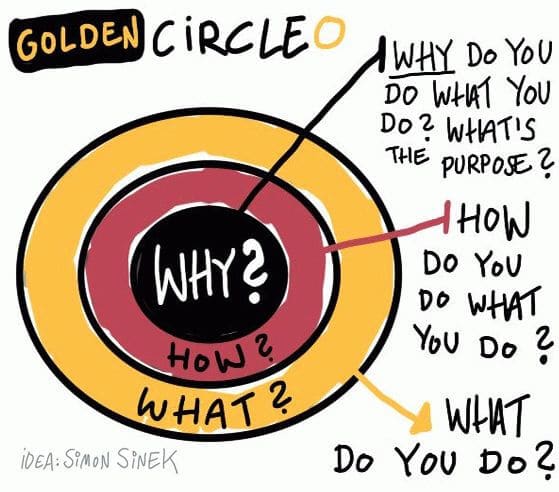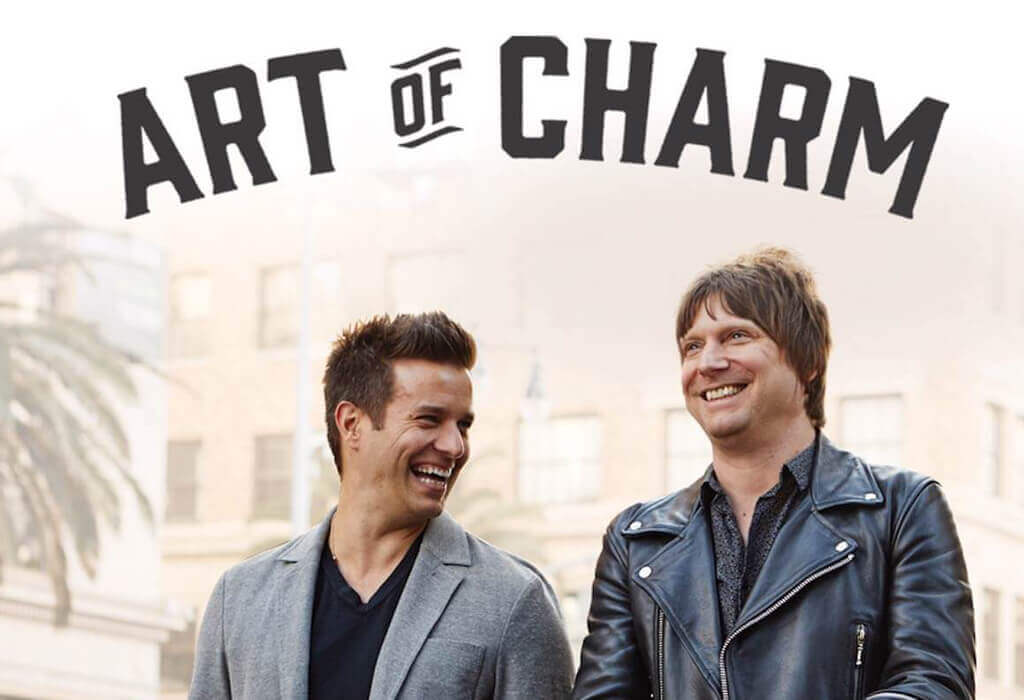Our From the Vault series examines episodes from The Art of Charm archive; we invite you to revisit them — or discover them for the first time — with us. This From the Vault revisits our conversation with Simon Sinek, best-selling author and visionary, who joined us to talk about how to start with why and how to be a leader.
Episode 392: Start With Why was recorded in April of 2015 and featured a man who “wakes up every single morning to inspire people to do what inspires them.” His name is Simon Sinek (pronounced like “cynic,” though he’s quite the opposite of one) and he is fundamentally interested in why we do what we do.
The Golden Circle
 Simon wants us to understand the why as nested within a three-part diagram he calls the Golden Circle, and uses Apple as his example. The outermost layer is what. For Apple this would be, “We make computers.” Every company has the answer to this layer. The second layer, below that, is how. Simon characterizes Apple’s how as, “Our products are beautifully designed and easy to use.” Some companies know this level. They know what makes them special and what sets them apart.
Simon wants us to understand the why as nested within a three-part diagram he calls the Golden Circle, and uses Apple as his example. The outermost layer is what. For Apple this would be, “We make computers.” Every company has the answer to this layer. The second layer, below that, is how. Simon characterizes Apple’s how as, “Our products are beautifully designed and easy to use.” Some companies know this level. They know what makes them special and what sets them apart.
But very few companies get to the third level, which is why. Apple: “We believe in challenging the status quo and doing things differently.” Simon argues that the reason Apple is successful is because it starts with why. The mission is what drives the company. The computers are simply a byproduct of that mission. Most companies start on the outside and either never penetrate below that first layer, or don’t even realize there are layers.
The why is that purpose/cause/belief that gets us out of bed in the morning. That should matter — not just for millennials, but for everybody. Jordan shared that his concept of work and jobs growing up was either that he would learn to love his job, or that it was irrelevant whether he loved his job. Work and love were not words necessarily built to go together in his mind. Simon responded by saying that not loving your job has a major effect on raising kids. If they witness growing up that work makes you “grumpy, short-tempered, and tired,” not only will they expect that behavior growing up, but they’ll fulfill it. That’s what work will mean to them!
It Wasn’t Always This Way…
Simon reflected that Europeans “work to live” and Americans “live to work.” But this attitude that caters to modern business practices is a fairly new phenomenon in American culture. The idea of shareholder supremacy — that shareholder interests are the most important drivers of business decisions, was a theory from the 1970s that was championed by (not surprisingly) big holders of stock. Now it’s simply a fait accompli. The same with the idea of mass layoffs to hit earnings targets. Up until the 1980s this simply did not exist in America as a practice anywhere other than in emergency scenarios in which the company’s existence was at stake. We have to reimagine that businesses can be run differently, and indeed they have to be.
We find ourselves in this state of affairs because of a misalignment of incentives and priorities. Companies say that growth is the most important thing, then customers, then employees. Simon asks the obvious question: “How is an employee going to be excited about being in third place? Is making money the goal or is making customers happy the goal? If we aim for happiness, not just of customers, but of staff as well, money is no longer the result — it’s a byproduct and a fuel.”
Not Just for Hippies
“It’s actually better for your business when your employees are less stressed. This is demonstrable with studies and science. But that’s not provable in the short-term. It’s a long-term play.” Simon examines that difference within the comparison of “investing” (long-term thinking) vs. “gambling” (short-term thinking). Because so many American companies are driven by quarters and financial statements tied to a fiscal year, they have forgotten about investing and are unconsciously gambling because they are chasing the bottom line.
Jordan agreed and talked about hiring employees at The Art of Charm for culture fit as he started to realize that “good enough” employees weren’t good enough for the type of company he wanted to build. Hiring for cultural fit is the first step in a ladder that focuses on employees being happier and less stressed, which of course leads to more productive (and profitable) companies.
Being a Boss vs. Being a Leader
“Being a boss,” noted Simon, “means that you have authority. But being a leader means that you have taken responsibility for those in your care.” Leaders need to make those whom they lead feel that they care about their growth, happiness, and success. It’s a thankless role and it’s a lot like being a parent. But if those under you believe that you are all in for them, that you are willing to eat last, or not at all, they will give you their blood, sweat, and tears.
Simon points out that leadership is a daily practice, a lifestyle, a muscle that you must build. “It’s asking someone how they are doing and actually caring about the answer.”
From the Vault selects just a few concepts from a podcast, but there’s always more to hear, including Jordan and Simon’s discussion about Japanese and Korean companies and their different approaches to long-term business goals compared to their American counterparts, as well as a shocking CDC statistic about a leading cause of death for baby boomers. Listen to it here. If you have just a few moments, take the time to thank Simon on Twitter and tag us. If you want even more of Simon’s take on leadership, check out his most recent TED talk.
What does leadership mean to you? Send your answers to to [email protected].
If this article or episode helped you, please consider writing a review for us on iTunes, because the greatest compliment you can give us is a referral to someone you think would appreciate this content. Now get out there and leave everyone better than you found them.


